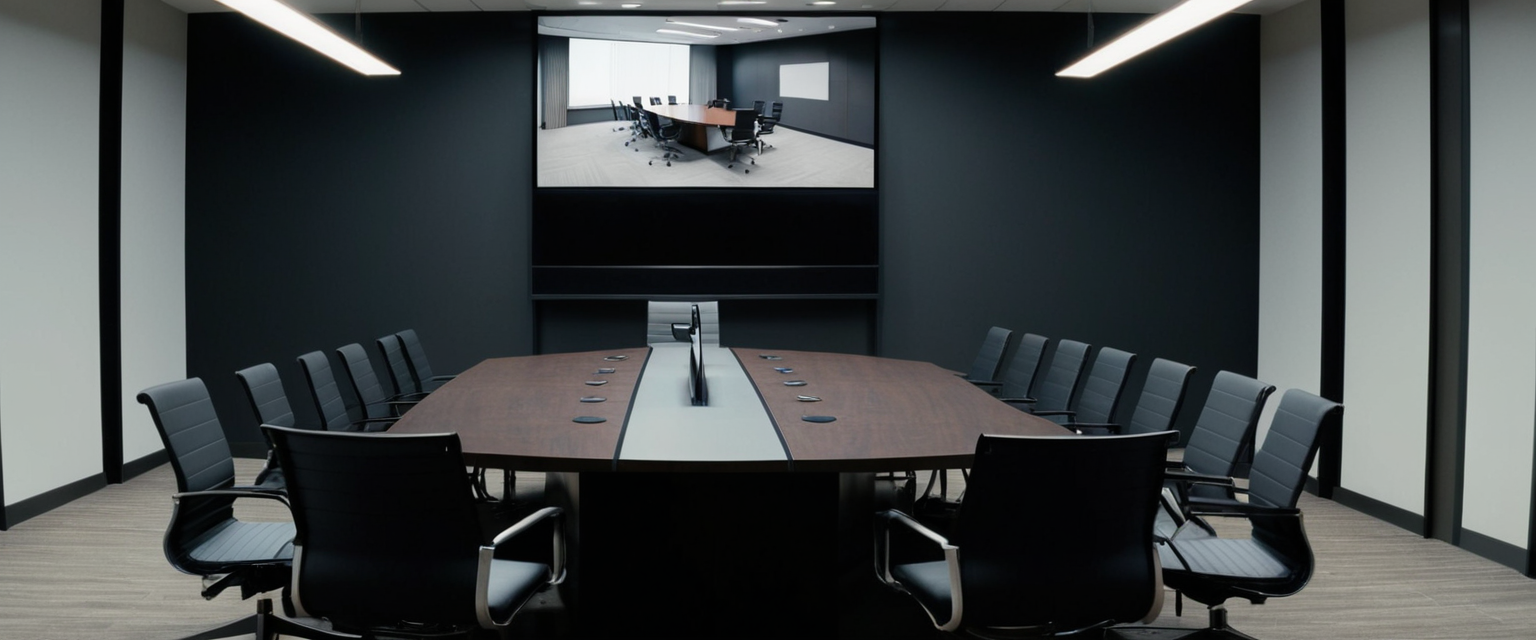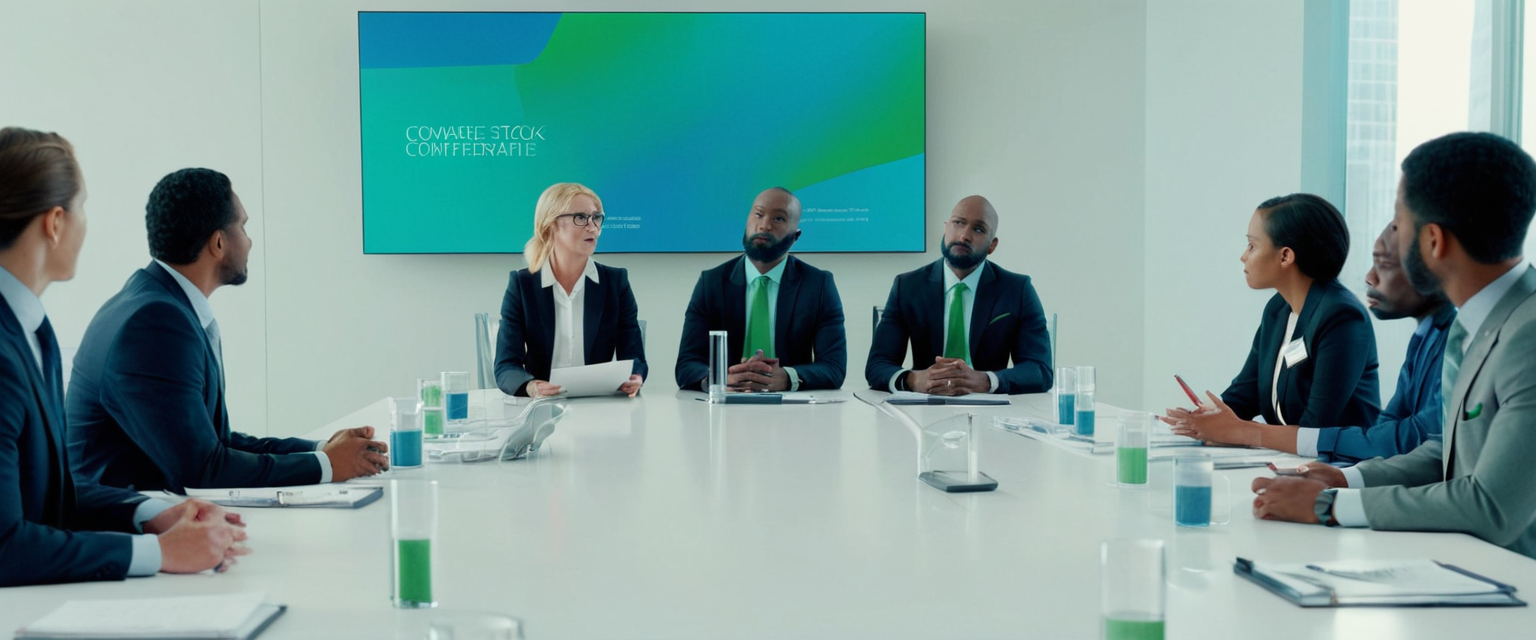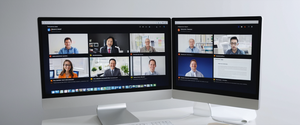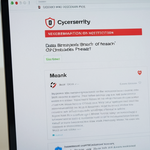
Conference room cameras represent a critical intersection of corporate security, privacy protection, and operational efficiency in modern workplaces. As hybrid work arrangements have become normalized and videoconferencing has evolved from a convenience to an essential business tool, organizations increasingly rely on sophisticated camera systems to facilitate seamless communication between in-person and remote participants. However, the deployment of these systems introduces complex legal obligations, privacy considerations, and ethical challenges that demand careful policy development and implementation. This comprehensive analysis examines the multifaceted landscape of conference room camera policies, revealing that while employers generally possess broad legal authority to install and operate video surveillance systems within their facilities, this authority is constrained by federal and state privacy regulations, employee rights protections, recording consent requirements, and an increasingly sophisticated framework of data protection obligations. Organizations that successfully navigate this landscape recognize that effective conference room camera policies must balance legitimate security and operational objectives with transparent communication, respect for employee privacy expectations, robust data protection measures, and compliance with evolving legal standards across multiple jurisdictions.
Legal and Regulatory Framework Governing Conference Room Video Surveillance
The legal landscape governing conference room cameras in the United States is primarily shaped by federal law, with significant state-level variations that create substantial complexity for organizations operating across multiple jurisdictions. At the federal level, the Electronic Communications Privacy Act of 1986 provides the foundational framework for workplace monitoring, establishing that employers generally possess the authority to monitor workplace communications and activities conducted on company-owned equipment and company premises. This broad authorization derives from the principle that employers retain ownership rights over company property and have legitimate business interests in protecting assets, ensuring security, and managing operations. The ECPA’s permissive approach toward video surveillance reflects the assumption that employees working in office environments should have a diminished expectation of privacy compared to their personal lives, particularly in common areas and shared spaces where business activities occur.
However, the seemingly straightforward federal framework becomes substantially more complicated when examined in conjunction with state law variations and the practical realities of modern workplace environments. Some states have enacted more restrictive privacy statutes that create heightened expectations of employee privacy in the workplace, effectively establishing a more protective baseline than federal law provides. Connecticut, for example, explicitly requires employers to provide written notice to employees before implementing video surveillance systems, creating a mandatory disclosure requirement that goes beyond federal baseline requirements. Other states like California have developed comprehensive privacy frameworks that impose significant restrictions on the collection, use, and retention of surveillance data, particularly when that surveillance captures biometric information such as facial features. The California Privacy Rights Act, which took effect on January 1, 2023, substantially expands employee data protection requirements and creates new compliance obligations for employers utilizing video surveillance systems. Understanding these state-specific variations has become essential for organizations because the legal permissibility of conference room camera deployment often depends not on federal law alone but on compliance with the most restrictive applicable state law in jurisdictions where the organization operates.
The National Labor Relations Act adds another critical layer of legal constraint that organizations must carefully navigate when implementing conference room camera policies. Section 7 of the NLRA protects employees’ rights to engage in concerted activities for mutual aid and protection, including union organizing, collective bargaining activities, and discussions about working conditions. Federal law explicitly prohibits employers from using video surveillance to monitor, suppress, or discourage union activities or protected concerted activity. This protection means that employers cannot strategically place cameras aimed at union bulletin boards, union meeting areas, or spaces where employees discuss wages, working conditions, or organizing efforts. The National Labor Relations Board has consistently held that surveillance of employees engaged in protected concerted activity, including secret recordings of conversations about workplace conditions, is prohibited regardless of whether a state permits such recording under its wiretapping laws. This federal preemption is particularly significant because it means that NLRA protections override state recording consent laws when employees are engaged in protected activities. Organizations attempting to enforce overly broad workplace recording policies that could chill employees’ ability to engage in protected concerted activity face unfair labor practice charges, demonstrating that the intersection of video surveillance policy with labor law creates substantial legal risk.
Technical Architecture and Camera System Selection for Conference Rooms
The technical specifications and physical configuration of conference room camera systems directly influence both operational effectiveness and privacy implications, requiring careful consideration of room size, layout, participant positioning, and intended use cases. Organizations deploying conference room cameras must first make fundamental decisions about camera type and functionality, as different camera architectures serve distinct operational purposes and carry varying implications for workplace privacy. Fixed cameras with wide-angle lenses represent the simplest and least expensive option, typically appropriate for small to medium-sized conference rooms where comprehensive room coverage is necessary but granular tracking of individual participants is not required. These fixed cameras generally incorporate wide-angle lenses ranging from 90 to 120 degrees, ensuring that all meeting participants are captured within the camera’s field of view, which is essential for remote participants to observe all in-room participants simultaneously. All-in-one video bars have emerged as increasingly popular solutions for smaller meeting spaces, combining video, audio, and presentation capabilities into compact integrated systems that simplify installation and reduce cable complexity while providing adequate coverage for intimate meeting environments.
In contrast, Pan-Tilt-Zoom cameras provide substantially greater flexibility and control, enabling meeting facilitators or remote participants to adjust the camera’s framing, focus on specific speakers, or zoom in on whiteboards and presentation materials as meeting dynamics require. These PTZ cameras prove particularly valuable in larger conference rooms where a single fixed camera cannot simultaneously maintain focus on multiple participants, capture presentation materials, and display remote meeting participants at adequate resolution for meaningful engagement. However, PTZ cameras introduce more complex operational capabilities that necessitate training and clear procedural guidelines regarding appropriate use, as the ability to zoom, pan, and focus on specific individuals raises additional privacy considerations beyond those associated with fixed cameras. Artificial intelligence-powered features now enable cameras to automatically track active speakers, adjust framing to include all participants, and dynamically shift focus between different meeting activities without manual operator intervention. These advanced capabilities enhance meeting equity by automatically adapting camera positioning to ensure remote participants receive high-quality video feeds that reflect meeting dynamics, but they simultaneously create more sophisticated technical systems requiring greater security attention to prevent unauthorized access or manipulation.
Display size and positioning directly influence both meeting effectiveness and privacy considerations, as inadequately sized displays compromise remote participants’ ability to observe and engage meaningfully while oversized displays in small spaces may create discomfort regarding surveillance perception. Industry best practices recommend calculating optimal display size by measuring the distance from the display to the furthest seating position, dividing that distance by four to determine minimum screen height, and then multiplying that height by 1.8 to determine optimal diagonal screen size. Camera positioning relative to displays deserves particular attention because cameras mounted at eye level or slightly above create the most natural and professional video feed, conveying direct engagement and facilitating nonverbal communication cues that enhance collaboration. When dual displays are utilized—a common configuration in larger conference rooms where one display shows remote participants while another shows shared content—cameras should ideally be positioned between the two displays at eye level to minimize the visual disconnect between seeing remote participants and maintaining eye contact with the camera. The specific height of standard seating typically ranges from 46 to 50 inches, providing a reference point for camera positioning that ensures the camera captures participants’ faces and upper bodies at natural angles.
Audio capture represents an equally critical component of conference room camera systems, as poor audio quality substantially degrades meeting effectiveness and creates frustration for all participants, particularly remote attendees who rely entirely on audio feeds for meaningful engagement. Microphone selection must account for room size, table configuration, and acoustic properties, as different room characteristics require different microphone configurations to achieve comprehensive audio coverage. Small to medium-sized conference rooms typically benefit from omnidirectional microphones that capture voice from any direction within the room, ensuring that regardless of speaker position, audio quality remains consistent. Larger conference rooms often require modular microphone systems with multiple microphone elements positioned strategically throughout the space to ensure comprehensive coverage and prevent distant speakers from being inaudible to remote participants. Speaker systems must be selected to ensure clear audio output without feedback, echo, or distortion, requiring careful attention to room acoustics and integration with the conference room’s audiovisual architecture. Professional video conferencing systems now routinely incorporate echo cancellation, noise suppression, and intelligent audio routing that automatically directs microphone input based on speaker location, dramatically improving audio quality compared to laptop built-in microphones or basic external speaker systems.
Privacy Rights, Reasonable Expectations, and Restricted Monitoring Areas
Employee privacy rights in conference rooms present a fundamental tension between organizational security interests and employee expectations of privacy, a tension that varies significantly based on physical space characteristics, awareness of surveillance, and the specific nature of activities occurring in the space. The doctrine of “reasonable expectation of privacy” provides the legal framework courts apply to assess whether surveillance in a particular location or under particular circumstances violates employee rights. This doctrine recognizes that privacy expectations are contextual—what constitutes reasonable privacy expectation in a bathroom differs substantially from expectations in an open office environment or a conference room in a commercial office building. In conference rooms, privacy expectations are generally diminished compared to truly private spaces, partly because conference rooms are dedicated business spaces where employees explicitly gather to conduct work activities. However, diminished privacy expectations do not equate to zero privacy rights, and courts have recognized that employees retain some privacy interests even in workplace settings, particularly regarding activities that do not directly relate to legitimate business monitoring purposes.
Certain workplace areas are universally recognized as spaces where employees retain heightened privacy expectations and where surveillance is legally prohibited regardless of employer notification or business justification. Restrooms, locker rooms, changing areas, and other facilities dedicated to personal hygiene and grooming are universally protected from video surveillance under federal and state privacy law. Installing cameras in these areas violates fundamental privacy rights and exposes organizations to criminal liability in addition to civil liability, regardless of whether employees have been notified of the surveillance. Employee break rooms and lounges occupy a more ambiguous legal status, as they are common areas used for business purposes but also spaces where employees reasonably expect to relax and engage in personal activities during breaks. Some states recognize stronger privacy expectations in employee break rooms and lounges than in other workplace areas, requiring stronger business justification and clearer notification before surveillance is permissible. Medical examination rooms, private counseling spaces, lactation rooms, and areas where sensitive personal information is routinely discussed occupy an intermediate category where surveillance is generally prohibited or heavily restricted.
Conference rooms themselves typically do not fall into the category of spaces where surveillance is prohibited, but this legal permissibility comes with important qualifications and practical limitations. Conference rooms used for legitimate business meetings without sensitive or confidential content do not generally trigger heightened privacy protections, and employers can legally conduct video surveillance in these spaces provided they comply with notice and consent requirements appropriate for their jurisdiction. However, when conference rooms are used for purposes that might trigger heightened privacy expectations—such as disciplinary meetings, medical consultations, legal consultations between employees and employment attorneys, or sensitive human resources discussions—the legal analysis becomes more complex. Some courts have recognized that even in workplace settings, certain types of conversations or activities create privacy interests that surveillance may violate. Additionally, when conference rooms are used by union representatives for protected concerted activity discussions, surveillance becomes legally problematic regardless of whether the conference room is located on employer property. Organizations deploying conference room cameras must therefore consider not just the physical characteristics of the space but the types of activities anticipated to occur in that space when determining whether surveillance is appropriate.

Recording, Consent, and Compliance Requirements for Conference Room Communications
The legality of recording conference room meetings and the obligations to obtain consent before recording represent some of the most complex and jurisdiction-dependent aspects of conference room camera policy implementation. Federal law under the Electronic Communications Privacy Act establishes a one-party consent standard for recording audio communications, meaning that only one participant in a communication must consent to recording for the recording to be lawful. This federal framework creates a presumption that in most of the United States, recording is permissible if at least one participant consents to the recording, even if all other participants are unaware of and do not consent to the recording. However, this federal baseline is substantially modified in approximately ten states and the District of Columbia, which have enacted all-party consent laws requiring that every participant in a communication explicitly consent to recording before any recording is lawful. These all-party consent states include California, Delaware, Florida, Illinois, Maryland, Massachusetts, Montana, New Hampshire, Pennsylvania, and Washington, creating substantial compliance complexity for organizations conducting videoconferences across multiple jurisdictions where participants may be physically located in different states with different recording consent requirements.
The jurisdictional complexity of recording consent becomes particularly acute in videoconference scenarios where participants may be scattered across multiple states with different consent requirements, creating uncertainty about which jurisdiction’s law governs the recording. Courts have reached different conclusions about how to resolve these conflicts, with some courts applying the law of the state where the recording device is located, others applying the law of the state where the person being recorded is located, and still others attempting to identify a single governing jurisdiction based on conflict-of-law principles. Given this uncertainty, many organizations adopt a conservative approach of obtaining consent from all participants in a recording regardless of where they are located, effectively applying all-party consent standards even to participants located in one-party consent jurisdictions. This conservative approach reflects the principle that consent obtained from all parties provides the strongest legal protection and minimizes risk of inadvertent legal violations arising from jurisdictional uncertainty.
Video recording presents distinct legal issues from audio recording, as many jurisdictions regulate audio recording more strictly than video recording, reflecting the theory that audio captures the substance of communications whereas video captures visual information with reduced privacy implications. Federal law and most state laws permit video recording with minimal consent requirements in areas where people do not have reasonable privacy expectations. However, when video recording captures audio—as is the case with most modern video conference systems that simultaneously record both video and audio feeds—the stricter audio recording standards apply, and compliance with all-party consent requirements becomes necessary in all-party consent states. This means that conference room camera systems that record both video and audio faces the full complexity of audio recording consent requirements, not just the more permissive video recording standards.
Platforms like Zoom have implemented built-in consent notification systems that inform all meeting participants when recording begins and require participants to acknowledge consent before proceeding. These automated consent mechanisms provide substantial legal protection for organizations utilizing such platforms, as they create documentary evidence of participant notification and provide participants with an opportunity to decline participation in a recorded meeting. However, even these sophisticated platform-level consent mechanisms are not foolproof, as system settings can sometimes be configured to display consent notifications only to external participants while exempting internal employees, potentially creating situations where not all participants receive equal notification. Organizations utilizing videoconference platforms with built-in consent mechanisms should verify that notification settings are configured to apply uniformly to all participants and should provide supplemental verbal notification of recording before beginning to record, as best practice dictates that written platform notification combined with verbal confirmation creates the strongest evidentiary record of informed consent.
Designing and Communicating Effective Conference Room Camera Policies
Effective conference room camera policies require careful attention to specific content, clear communication of expectations and limitations, and systematic implementation that ensures all stakeholders understand the policy and comply with its requirements. Well-constructed video conferencing policies typically address multiple distinct categories of information including meeting objectives and agenda requirements, meeting scheduling and timeliness expectations, professional conduct standards and appropriate attire, background environment standards, authorized platform specifications, secure sharing of meeting access information, data sharing protocols and recording consent requirements, password protection standards, device requirements, technical support contact information, meeting conduct expectations, and accessibility accommodations. Beyond these baseline elements, conference room camera policies should explicitly address video surveillance parameters by specifying which conference rooms contain cameras, the technical capabilities of those cameras, the purposes for which video surveillance is conducted, the specific areas within each conference room that are under surveillance, and any limitations on camera usage such as restrictions on audio recording or prohibitions on surveillance of specified areas.
Organizations must consider carefully what specific surveillance purposes justify conference room camera deployment, as this justification forms the legal and ethical foundation for the surveillance and should be clearly communicated in company policies. Legitimate surveillance purposes might include facilitating videoconference functionality for hybrid meetings, ensuring security and preventing theft or misconduct, training and quality assurance purposes, documenting disciplinary meetings for evidentiary purposes, or protecting valuable equipment and intellectual property. In contrast, surveillance purposes that focus on monitoring employee productivity, tracking employee location throughout the day, or gathering evidence of policy violations in areas where employees have heightened privacy expectations would likely exceed permissible surveillance boundaries. When policies clearly articulate legitimate business purposes for surveillance, both employees and courts are more likely to find the surveillance reasonable and proportionate. Conversely, vague or overly broad policies that fail to specify purposes create ambiguity regarding whether surveillance extends beyond legitimate business needs, potentially increasing legal risk.
Communication of conference room camera policies must reach employees through multiple channels to ensure comprehensive awareness and comprehension. Standard practice involves including surveillance policies in employee handbooks distributed to all employees at hire, providing written notification during onboarding and training processes, posting visible signage at conference room entrances indicating that cameras are in operation, and conducting periodic training sessions to reinforce policy requirements and address employee questions or concerns. Many state laws explicitly require written notice to employees before surveillance can be implemented, making written notification not merely best practice but a legal requirement in jurisdictions like Connecticut. When surveillance is implemented in existing workplace locations where employees may have previously assumed no surveillance existed, explicit communication becomes particularly important to address potential surprise and minimize morale concerns. Organizations should consider obtaining written acknowledgment from employees confirming that they have received, read, and understood surveillance policies, as this written record provides evidence of notification in the event of subsequent employment disputes or legal challenges to the surveillance.
Video conferencing policies must address consent requirements clearly and prominently, particularly regarding meeting recording. Organizations should establish definitive rules regarding whether conference room meetings will be automatically recorded, whether recording requires advance permission, whether recordings will be retained or deleted after each meeting, and whether recordings may be reviewed or shared with others. When policies permit recording, they should specify whether participants must be notified before recording begins and provide clear procedures for participants to object to recording. Some organizations establish default policies of no recording absent explicit participant consent, recognizing that this approach provides the strongest privacy protection and reduces legal risk associated with inadvertent recordings that may violate consent requirements. Other organizations adopt policies of recording all meetings by default with participant notification and consent procedures, but this more permissive approach requires careful implementation to ensure that notification reaches all participants and that participants genuinely understand they can decline participation in recorded meetings. The National Labor Relations Act creates specific risks for recording policies that could chill employees’ ability to engage in protected concerted activity, requiring that recording policies include explicit carve-outs protecting employee rights to record conversations related to wages, working conditions, union organizing, or other protected activities.
Data Security, Cybersecurity Threats, and Vulnerability Management
Conference room camera systems, particularly modern systems with network connectivity and integration into organizational IT infrastructure, present substantial cybersecurity risks that demand systematic vulnerability management and security protocols. These systems function as internet-connected devices with access to sensitive data, video feeds of business meetings, participant information, and in some cases, integration with broader organizational networks, creating multiple attack vectors through which malicious actors might compromise system security. Unauthorized access to conference room camera systems could enable eavesdropping on confidential business meetings, theft of intellectual property or business strategy information discussed in meetings, hijacking of meetings through denial-of-service attacks or unauthorized participant injection, manipulation of displayed content or recorded video feeds, or installation of malware that provides broader network access. The financial implications of compromise are substantial, with cybersecurity costs continuing to increase globally and organizational vulnerability to conference room equipment compromise creating significant liability exposure.
Common cybersecurity threats specific to conference room audiovisual equipment include meeting bombing where unauthorized individuals gain access to videoconference sessions, typically through reused meeting links or weak password protection that fail to prevent unauthorized access. Malicious actors may join meetings to eavesdrop on confidential discussions, disrupt meetings through inappropriate content sharing or audio disturbance, obtain participant information or identities for subsequent social engineering attacks, or plant malware-laden links in meeting chat functions that participants inadvertently click. Remote access vulnerabilities in conference room equipment allow attackers to gain control of cameras, microphones, displays, and recording functionality without any participation in a meeting, potentially enabling persistent eavesdropping or surveillance of physical spaces when meetings are not actively occurring. Ransomware attacks that compromise conference room systems can disable critical meeting infrastructure and demand payment for system restoration, creating disruption to business operations. Man-in-the-middle attacks can intercept unencrypted video and audio feeds, enabling eavesdropping on meeting communications. Data theft through compromised storage systems can expose recorded meetings containing sensitive information if recordings are not securely encrypted and access controlled.
Organizations must implement comprehensive security measures to defend conference room camera systems against these threats, beginning with regular software updates and patch management that address discovered vulnerabilities before malicious actors can exploit them. Automatic update mechanisms should be enabled wherever possible to ensure that security patches are applied promptly without requiring manual intervention from busy conference room users. Strong authentication mechanisms including multi-factor authentication should be implemented to restrict access to conference room equipment administration functions, ensuring that only authorized personnel can modify system settings, access recordings, or manage camera controls. Encryption of data in transit and at rest should be standard practice, utilizing industry-standard encryption protocols like AES-256 for stored recordings and end-to-end encryption for video and audio streams to prevent interception or unauthorized access. Network segmentation that isolates conference room equipment from general office networks should be implemented where feasible, creating protected network zones where only authorized traffic accesses sensitive equipment. Regular security audits and vulnerability assessments should be conducted to identify weaknesses before malicious actors discover them.
Meeting link security practices must include generating unique meeting IDs for each meeting rather than reusing the same meeting link, as reused links become easier for attackers to guess or exploit after observing patterns. Strong, complex passwords that combine letters, numbers, and special characters should be required for all meetings, particularly those involving sensitive discussions. Waiting rooms should be enabled to allow meeting hosts to verify attendee identities before admitting individuals to meetings. Meeting links should be shared only through secure communication channels and only to intended participants, rather than being publicly posted or shared through insecure mechanisms that could allow interception by unauthorized individuals. Recording and transcription features should be carefully managed, with clear notification to all participants about whether meetings are being recorded and automatic disabling of recording by default unless explicitly enabled with participant consent. Organizations should implement incident response plans for security breaches, establishing procedures for rapid detection of compromises, containment of affected systems, communication with affected stakeholders, and forensic investigation to understand how breaches occurred and prevent recurrence.

Compliance with Data Protection Regulations: GDPR, HIPAA, and State Privacy Laws
Conference room camera systems that capture and retain video and audio recordings must comply with evolving data protection regulations that establish requirements for lawful processing of personal data, protection of sensitive health information, and respect for individual rights regarding their data. The European Union’s General Data Protection Regulation establishes comprehensive requirements for processing personal data of European Union residents that apply to any organization processing such data, including through conference room camera recordings that may capture information about EU residents. Under GDPR Article 5, personal data must be processed lawfully, fairly, and transparently, suggesting that organizations must provide clear notice that video conferencing occurs and obtain informed consent from data subjects whose personal data is captured. The controller—the organization determining how personal data is processed—bears responsibility for ensuring GDPR compliance, and cannot rely solely on platform providers to ensure compliance, as organizations must implement technical and organizational measures to protect personal data from unauthorized access. When recording meetings that may include European participants, organizations should rely on platforms like Zoom that have implemented Data Processing Addendums confirming compliance with GDPR requirements and should enable GDPR-compliant consent mechanisms to ensure participants explicitly consent to recording.
Zoom’s GDPR compliance framework includes contractual commitments to use personal data only as stated in agreements with customers, maintenance of appropriate technical and organizational security measures, assistance with individuals’ data rights including access requests and deletion requests, and options for European customers to utilize data centers within the European Union to ensure data remains within EU jurisdictions subject to EU legal protections. However, even GDPR-compliant platforms require organizations to implement appropriate organizational practices, including establishing retention policies that limit how long recordings are maintained, implementing access controls that restrict who can view recordings, and providing mechanisms for individuals to exercise rights like requesting erasure of their data from recordings. Organizations handling GDPR-covered data should establish data retention policies specifying that recordings are maintained only as long as necessary for stated business purposes, typically ranging from 30 to 90 days unless specific business or legal reasons justify longer retention.
The Health Insurance Portability and Accountability Act establishes strict requirements for organizations handling protected health information, requiring HIPAA-covered entities and business associates to implement specific administrative, physical, and technical safeguards protecting patient health information from unauthorized access or disclosure. Healthcare organizations, medical practices, and other entities handling patient information must ensure that conference room systems meet HIPAA requirements, which generally means avoiding recording in areas where patient treatment occurs unless absolutely necessary for healthcare purposes and ensuring that any recordings are encrypted, access-controlled, and stored securely. Videoconference platforms used for telehealth purposes must be specifically selected to meet HIPAA requirements, which typically means utilizing enterprise versions of platforms that include Business Associate Agreements formally committing to HIPAA compliance rather than consumer versions of applications that lack such commitments. Organizations providing telehealth services must verify that videoconference platforms they select have signed Business Associate Agreements and have configured systems appropriately to ensure HIPAA compliance.
State privacy laws, including California’s Privacy Rights Act, Colorado’s amended Privacy Act, and similar comprehensive privacy laws enacted in multiple states, increasingly establish requirements for organizations to protect employee privacy and notify employees about data collection and use. When conference room cameras incorporate facial recognition or biometric identification capabilities, these state biometric privacy laws trigger additional requirements for notice and consent. Illinois’s Biometric Information Privacy Act, the most comprehensive state biometric law, requires written notice to individuals about collection of biometric information, specification of purposes and retention duration, and signed written consent before collection occurs. Colorado’s biometric amendments require employers to obtain consent before collecting biometric data and establish policies limiting use to specific safety and security purposes and timeclock records. Organizations deploying conference room systems with facial recognition capabilities must understand applicable biometric privacy laws in states where they operate and ensure compliance through appropriate consent mechanisms and data protection practices.
Ethical Implementation, Employee Trust, and Workplace Culture
While legal compliance establishes a minimum baseline for conference room camera policies, ethical implementation requires additional consideration of employee perspectives, workplace culture implications, and the fundamental tension between organizational security interests and employee autonomy and dignity. Research on employee monitoring demonstrates that covert or poorly communicated surveillance creates significant morale problems, erodes trust between employees and management, reduces intrinsic motivation, and creates stress that can impair productivity despite organizations’ intentions of using surveillance to enhance productivity. When employees perceive that they are being secretly monitored or that monitoring is more extensive than necessary, they experience anxiety about potential misuse of surveillance data, fear that surveillance will be weaponized against them during performance reviews or disciplinary actions, and concern that their personal privacy in home offices is being invaded. These negative psychological responses to surveillance persist even when surveillance is conducted for legitimate security purposes and do not violate legal requirements, suggesting that legal permissibility does not equate to ethical appropriateness.
Transparent communication about surveillance purposes and parameters significantly mitigates negative employee responses, with research showing that employees respond more favorably to surveillance when they understand clear business justifications for it and when they understand how surveillance data will be protected and used. Organizations that involve employees in surveillance policy development through representative sampling or employee focus groups, provide clear written explanations of surveillance purposes, establish clear procedures for accessing and challenging surveillance data, and demonstrate that surveillance is proportionate to actual security threats generate greater employee buy-in and reduce the perception that surveillance represents intrusive spying. Limiting surveillance to genuinely necessary purposes and avoiding mission creep where surveillance systems gradually expand beyond their original intended scope helps maintain employee trust and demonstrates that organizations take privacy seriously. When surveillance systems are initially implemented for specific purposes like security or safety but are gradually expanded to monitor employee productivity or off-task behavior, employees perceive this as a betrayal of the implicit trust they extended when accepting the original surveillance, creating backlash and reduced cooperation.
The phenomenon of “surveillance creep” deserves particular attention because conference room camera systems, once installed, create infrastructure that creates organizational temptation to expand surveillance beyond original purposes. A camera initially installed to facilitate hybrid videoconferences might subsequently be accessed to monitor whether employees are physically present in conference rooms, whether they are using conference room resources appropriately, or whether they are engaged in non-work activities during work hours. This mission creep occurs incrementally, often without conscious decision-making, as system administrators discover new capabilities or as organizational priorities shift toward increased productivity monitoring. Establishing explicit policies that prohibit using conference room cameras for purposes beyond their stated original purposes, implementing technical controls that prevent monitoring outside stated purposes, and conducting periodic audits of surveillance use to detect unauthorized expansion helps prevent mission creep and maintains employee trust. Organizations should view surveillance policies not as fixed documents but as evolving frameworks requiring regular review and explicit reauthorization of surveillance purposes to ensure that actual practices align with stated policies.
The potential for surveillance to be perceived as unfairly applied creates additional trust concerns, as employees naturally suspect that surveillance data might be used selectively to discipline favored or disfavored employees inconsistently. Even objectively fair application of surveillance data can create appearance-of-unfairness if management is not transparent about how surveillance findings are analyzed and applied. When surveillance reveals specific employee behaviors that trigger disciplinary action for some employees but not others, employees naturally infer that enforcement is selective and therefore unfair, even if legitimate contextual reasons justify differential treatment. Establishing clear disciplinary procedures that specify how surveillance evidence will be analyzed, creating appeal procedures that allow employees to challenge conclusions drawn from surveillance data, and documenting surveillance decisions to create institutional records that demonstrate consistent application helps mitigate perception-of-unfairness concerns.
Addressing Privacy Risks in Hybrid Conference Room Environments
The emergence of hybrid work arrangements where some meeting participants are physically present in conference rooms while others participate remotely through video creates novel privacy challenges that traditional single-location surveillance policies inadequately address. When conference room cameras capture video of in-room participants for transmission to remote participants, they simultaneously create video records that can reveal private information about those participants’ physical environments, family members or other people visible in backgrounds, personal objects that indicate interests or affiliations, and contextual information about participants’ living situations that participants may not have intended to share. Researchers studying privacy challenges in videoconference environments found that webcams and audio streams frequently carry privacy-relevant information that participants are unaware they are revealing, including hints about living situations, family composition, educational background, political views, sexual orientation, and other sensitive personal information.
The fundamental privacy challenge arises from the video window created by videoconference systems, which provides meeting participants a literal window into other participants’ physical environments and consequently into aspects of their personal lives that they may not have willingly shared. When an employee joins a videoconference from home and chooses to enable video, they are inadvertently creating video documentation of their home environment, and if their home contains children who enter the background, partners, or family members visible in the video frame, those third parties become subjects of video recording without having provided informed consent. Musicians having guitars visible in backgrounds, bookshelf contents suggesting political or religious affiliations, artwork or decorations indicating ethnic or cultural background, and countless other environmental details become visible to all meeting participants and potentially recorded if the meeting is recorded. Even when individuals believe they have closed or minimized cameras, technical issues or user error can result in unintended video transmission, creating privacy violations that the affected individual did not knowingly authorize.
Conference room camera policies should address these privacy risks by permitting employees to enable virtual backgrounds or blur background features to prevent inadvertent disclosure of private environmental information. Many modern videoconference platforms incorporate background blur or virtual background technology that obscures the participant’s physical surroundings while maintaining clear video of the participant’s face and upper body, effectively creating a privacy buffer that protects home environment information. Organizations should actively encourage or require use of such features when employees participate in meetings from remote locations, particularly when meetings involve senior leadership, clients, or discussions of sensitive information where environmental privacy is especially important. Policies should also address the rights of people who might inadvertently appear in video backgrounds, such as family members or household members, by ensuring that employees understand they should prevent others from appearing in video frames and by committing that any incidental capture of such individuals in meeting recordings will not create liability or legal consequences for the employee.
Audio privacy presents parallel challenges, as microphones in conference rooms and on personal devices capture not only intended meeting participants but also ambient sounds that may reveal private information. In home office environments, microphones may capture conversations between family members, household activities, children’s activities, pets, and other ambient sounds that reveal information about the employee’s personal life and household composition. Organizations should establish policies encouraging employees to mute microphones when not actively speaking and to be aware of background noise and activity that might inadvertently be captured. Providing guidance about setting up dedicated home office spaces with background noise isolation, using high-quality microphones with directional pickup patterns that reduce ambient noise capture, and establishing norms around video camera usage that respect privacy can substantially reduce inadvertent privacy disclosures.

Best Practices for Conference Room Camera System Implementation and Management
Organizations seeking to implement conference room camera systems that balance legitimate security and operational objectives with appropriate respect for privacy and employee rights should follow evidence-based best practices developed from legal analysis, organizational experience, and research on effective surveillance policies. The foundation of effective conference room camera policy begins with conducting a thorough assessment of legitimate business purposes that surveillance will serve, explicitly documenting these purposes, and committing to limit surveillance activities to these stated purposes. This assessment should consider whether specific surveillance purposes can be achieved through less invasive means than video recording, as the principle of proportionality requires that surveillance be appropriate in scope and intensity relative to actual business needs. Where legitimate purposes include facilitating hybrid videoconferences, the assessment should determine what specific technical capabilities are necessary—full-room camera coverage, audio capture capabilities, automatic speaker tracking, recording functionality, or others—rather than deploying maximum technical capability regardless of actual needs.
Organizations should establish clear written policies that specify which conference rooms contain cameras, the technical specifications and capabilities of cameras in each room, the explicitly stated purposes for which cameras will be used, the timeframes during which cameras will be active or inactive, any restrictions on audio recording, and parameters regarding retention and access to recorded meetings. These policies should be reviewed by legal counsel to ensure compliance with applicable state and federal laws including ECPA, NLRA, state-specific privacy statutes, biometric privacy laws where applicable, and professional ethics rules if the organization operates in regulated professions. Policies should explicitly incorporate the recognition that NLRA protections override state recording consent laws when employees are engaged in protected activities, and should include carve-outs protecting employee rights to record conversations about wages, working conditions, union activities, or other protected concerted activities regardless of company policy. Once policies are established, they should be communicated to all employees through multiple channels including employee handbooks, training sessions, onboarding processes, and visible signage in conference rooms, with documented evidence that employees have received and understood the policies.
Technical implementation should carefully consider camera selection and placement to achieve legitimate surveillance purposes while minimizing capabilities beyond what is necessary. Fixed cameras with appropriate field of view for conference room dimensions and layouts often provide adequate functionality without the operational complexity and privacy implications of PTZ systems that can be remotely controlled to focus on specific individuals. When PTZ capabilities are selected, organizations should establish clear policies about who can control cameras, what purposes camera control will serve, and what restrictions apply to camera positioning and focus. Cameras should be positioned to capture all in-room participants fairly rather than focusing disproportionately on particular individuals, and if multiple conference rooms have cameras, similar positioning and technical specifications should be applied across rooms to create consistency and prevent perception that some rooms are more heavily surveilled than others. Audio recording capabilities should be carefully considered, with clear policies specifying whether audio recording is permitted, whether participants will be notified when audio recording begins, and what purposes recorded audio will serve.
Data security and protection must be systematized through enterprise-level practices that recognize conference room camera systems as connected devices presenting cybersecurity vulnerabilities requiring professional security management. Regular software updates and security patches should be automatically applied or require active scheduling to ensure systems do not operate with known security vulnerabilities. Access to camera controls, recording management, and system administration functions should be restricted to explicitly authorized personnel through strong authentication mechanisms including multi-factor authentication. Meeting recordings should be encrypted both in transit and at rest, stored in access-controlled locations with automatic deletion after retention periods unless specific business or legal reasons justify longer retention. Meeting link security should be managed through practices like generating unique meeting IDs for each meeting, requiring complex passwords, enabling waiting rooms, and distributing links only through secure communication channels to intended participants. Organizations should implement incident response procedures for security breaches affecting conference room systems and conduct periodic security audits to identify vulnerabilities before malicious actors discover them.
Compliance with applicable data protection regulations must be verified through systematic processes that identify applicable laws based on organizational jurisdictions and participant locations. For organizations operating in European Union jurisdictions or conducting meetings with European participants, GDPR compliance must be confirmed through use of GDPR-compliant platforms with signed Data Processing Addendums and implementation of appropriate organizational practices including retention policies, access controls, and mechanisms for individuals to exercise data rights. For healthcare organizations, HIPAA compliance must be verified through selection of HIPAA-compliant platforms with Business Associate Agreements and appropriate configuration of security and access controls. For organizations in states with comprehensive privacy laws or biometric privacy laws, compliance with those laws must be ensured through appropriate consent mechanisms, data protection practices, and documentation of compliance. Organizations operating across multiple jurisdictions should apply the most protective applicable standards across all operations to ensure compliance regardless of where specific meetings occur.
Establishing Your Conference Camera Governance
Conference room cameras have become ubiquitous tools in modern organizations, facilitating hybrid work arrangements and enabling effective collaboration between in-office and remote participants. However, their deployment creates complex legal, technical, and ethical challenges that require careful policy development, systematic implementation, and ongoing management to ensure that legitimate organizational interests in security and operational effectiveness are balanced appropriately with respect for employee privacy and autonomy. The legal landscape governing conference room cameras is multifaceted, encompassing federal statutes like the Electronic Communications Privacy Act and the National Labor Relations Act alongside varying state privacy laws that create a complex patchwork of requirements that organizations must navigate. Federal law generally permits video surveillance in workplace common areas for legitimate business purposes, but this authority is constrained by employee privacy expectations, the requirement that surveillance not target protected concerted activities, and state laws that impose stricter requirements than federal baseline standards.
Technical architecture decisions regarding camera type, placement, and capabilities directly influence both operational effectiveness and privacy implications. Organizations should select camera systems that provide necessary functionality without exceeding actual business requirements, implement them in ways that capture all participants fairly rather than focusing disproportionately on individuals, and protect the systems through comprehensive security practices that address cybersecurity vulnerabilities inherent in network-connected devices. Recording of meetings triggers complex legal requirements regarding participant consent that vary based on jurisdiction, with organizations operating across multiple states best served by implementing comprehensive consent procedures that exceed minimum legal requirements and provide participants with clear notification and opportunities to decline recording. Data protection must recognize conference room camera systems as handling sensitive information subject to regulatory requirements including GDPR, HIPAA, state privacy laws, and potentially biometric privacy laws, requiring organizations to implement appropriate safeguards and retention policies.
Perhaps most importantly, effective conference room camera policies recognize that legal permissibility does not equate to ethical appropriateness or optimal organizational functioning. Transparent communication about surveillance purposes, limiting surveillance to genuinely necessary purposes, avoiding mission creep through deliberate commitment to stated purposes, and demonstrating that surveillance will be applied fairly and proportionately create employee trust that legal compliance alone cannot achieve. When employees understand why surveillance occurs, see how surveillance data will be protected, and trust that surveillance will not be misused, they respond more positively than when surveillance is perceived as secret, excessive, or subject to arbitrary application. Organizations that view surveillance policies through the lens of employee trust and workplace culture, in addition to legal compliance, create more effective and humane workplace environments where technology serves human collaboration rather than undermining it through perception of intrusive monitoring and control.
Protect Your Digital Life with Activate Security
Get 14 powerful security tools in one comprehensive suite. VPN, antivirus, password manager, dark web monitoring, and more.
Get Protected Now





